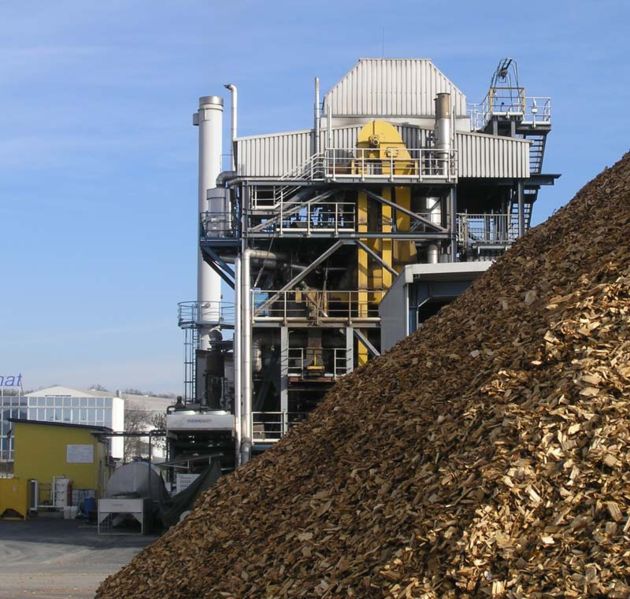The Sins of Waste into Syngas
Interview with
Chris - This is The Naked Scientists with Chris and Kat and you've heard so far about the options in making new materials from rubbish, and even solid and liquid fuels. Well, another option is to use our waste as a base for making something called syngas, which stands for synthesis gas. This is a mixture of carbon monoxide and hydrogen, and you can use that to make things like diesel or methane or even polymers. Peter Jones is a director of Waste2Tricity and is also an advisor on the London Waste Recycling Board. He's with us now. Hello, Peter.
 Peter - Hello there, Chris.
Peter - Hello there, Chris.
Chris - So tell us about syngas. Why is this 'the new kid' on the biological block that we love?
Peter - Well, what we're seeing basically with the transition of these carbon molecules in our waste stream, is a movement up a hierarchy, if you like, to even more sophisticated technologies. And economically, this is underpinned by the advising landfill tax which has gone from seven pounds and it's now effectively just short of 50 pounds in just around 10 years, and it's going to go up.
Chris - 50 pounds per what? Per ton?
Peter - I beg your pardon, 50 pounds per ton, that's going to go up even further to between 70 and 80 pounds per ton by 2011.
Chris - I presume that putting out the process like that is making technologies like the one that you're advising on here actually much more deliverable because they become much more cost effective.
Peter - Absolutely. The other driver is the forward threat and possibility of either carbon taxation or carbon tradable permits, because what's happened in the last five years is that the whole waste debate is now being conflated in with the issues of renewable energy, global warming, and we're not now really looking at waste as a problem that we have to solve reactively and in a fairly sort of embarrassed sort of fashion. We've got companies out there now that see this as a genuine opportunity, as you heard from John Williams and, in fact, the race is on really for a technology to demonstrate two core issues. First of all, the lowest carbon footprint from the collection, from the producer, the disposer of the waste to its conversion into any form of energy--electricity, heat, steam, transport fuel, substitute gas. That's the first thing because in a world in 2015, 2020 where we may be paying based on carbon emissions then you need that low carbon foot print. And the second key criterion that's emerging is that in the black box; whether it's a thermal process, thermal oxidation or starved air thermal processes, whether it's biological and it's aerobic in the presence of oxygen or anaerobic, the conversion factor of the raw energy into energetic output, the so-called conversion efficiency of that technology, has to be at the absolute maximum because the really financially attractive market is this market for electricity-gas combined heat and power and so on.
Chris - One of the points that Kat made in the previous interview, which was talking to Richard was, you know, is this actually environmentally beneficial? Because it's one thing to recycle all this stuff but if the lorry that comes to my house to collect my glass recycling bin actually ends up burning off more diesel than it costs to resynthesize all that glass in terms of how much green house gases has got emitted then it's great to be green. But it's not actually being green. The numbers don't add up. So, what are you doing to make sure the numbers add up with this technology?
 Peter - I agree. The first thing that we have to do is make sure that before we come up with solutions, and I believe the waste industry, it really hasn't been very good at this in the past. In fact it's been absolutely rubbish, is that we've got to start really looking at what's called "life cycle analysis" of the whole process. Most people think that waste management is really about these technologies, whether it's incineration, whether in the black box, so to speak, or these new innovative technologies; recycling. But it's actually about, not only the end-process it's also about the technology of the logistics of the trucks. Because different technologies need different fuel feed stocks and those different fuel feed stocks demand front-end collections systems to be different. Now, I personally am an economist and I spent my whole life in logistics and distribution, and there's currently a debate raging in the industry as to whether you collect and make it easy for disposers to mix their waste and then you take it to a separation centre, usually a mechanical engineering-type process, where, as you've heard you can use floatations, separation, infrared detection and so forth, or whether you in fact maximise the separation of the material at the front end and then you run a blending operation much like - if you like a bakery operation, so that you blend fuels according to the needs of the different technologies that emerge. And certainly what I've been saying both to the Mayor of London and the board there and also to the West Midlands who've got a software package coming out now looking at this, is that really what you have to do is look at the end market. Where are these carbon molecules that leave household commercial and industrial dustbins? Where are they going to command the maximum economic value? And again, as you've heard that's in electrical energy substitution load fuels, gas, rather than possibly selling recycled plastics when in unstable markets or selling compost as fertilizer substitutes. So, the economics of the end market drive the decision around the technology.
Peter - I agree. The first thing that we have to do is make sure that before we come up with solutions, and I believe the waste industry, it really hasn't been very good at this in the past. In fact it's been absolutely rubbish, is that we've got to start really looking at what's called "life cycle analysis" of the whole process. Most people think that waste management is really about these technologies, whether it's incineration, whether in the black box, so to speak, or these new innovative technologies; recycling. But it's actually about, not only the end-process it's also about the technology of the logistics of the trucks. Because different technologies need different fuel feed stocks and those different fuel feed stocks demand front-end collections systems to be different. Now, I personally am an economist and I spent my whole life in logistics and distribution, and there's currently a debate raging in the industry as to whether you collect and make it easy for disposers to mix their waste and then you take it to a separation centre, usually a mechanical engineering-type process, where, as you've heard you can use floatations, separation, infrared detection and so forth, or whether you in fact maximise the separation of the material at the front end and then you run a blending operation much like - if you like a bakery operation, so that you blend fuels according to the needs of the different technologies that emerge. And certainly what I've been saying both to the Mayor of London and the board there and also to the West Midlands who've got a software package coming out now looking at this, is that really what you have to do is look at the end market. Where are these carbon molecules that leave household commercial and industrial dustbins? Where are they going to command the maximum economic value? And again, as you've heard that's in electrical energy substitution load fuels, gas, rather than possibly selling recycled plastics when in unstable markets or selling compost as fertilizer substitutes. So, the economics of the end market drive the decision around the technology.
Chris - So, can we just spend a couple of minutes and just talk a bit about the actual technologies themselves? So, we've sort of mentioned this syngas concept, the idea of getting this gas which is a mixture of carbon monoxide and hydrogen, which is produced by digesting or doing various chemical modifications to waste. But how do we arrive at that syngas end point? What are the techniques for making it?
Peter - Fine, in terms of syngas specifically, syngas is mainly a mixture of hydrogen and carbon monoxide. The attraction of going to syngas is that, probably, we will have a strong operational base for hydrogen in 2020, 2025. At the moment, we don't have that infrastructure, in terms of the necessary fuel cell technology, and within that then, of course, the automotive market which represents a pretty big price. And effectively, what you're talking about here is starved air baking at high temperatures of carbon that's coming in and usually preselected. You don't want to heat up and bake waste that contains inert materials, such as metals or aggregates because those just represent lost energy and remember what I was saying about the overall thermal efficiency of the system. So, you effectively, much like the old gas plants that we had before North Sea gas arrived in the mid-late 60's in this country. Those plants bake at a lower temperature, and in those, you ended up with town gas which was a mixture of hydrogen, methane and carbon monoxide. The great thing about that in the short run, is that you can then take that to a - you can burn it in a boiler, that's the preferred route at the moment in some countries. But if you can take - if you can get the gasification to occur at a higher temperature, you knock out the tars which are a real problem by-product. Tars are long-chain molecules that effectively gum up your system. And that's why the syngases aren't put through internal combustion engines because they effectively coke up. So, if you take the reaction temperature up through a plasma-type system, a bit like the electric car furnaces for melting recovered steel within an anode and a cathode - you generate temperatures of the order of 2,000 degrees and you've got a fluidised bed and an air starved atmosphere, and you use a limestone flux together with a Coke, a carbon-base to accelerate the reaction and then the tars deposit on the limestone, basically, and convert to a glassy slag.
Chris - Which is obviously what you want because it doesn't end up gumming up your engine. Peter we'll have to leave it there, but thank you very much for joining us. That's Peter Jones who's the director of Waste2Tricity, explaining how we could use rubbish to make syngas.
- Previous Rubbish Power
- Next Jockeys Stance Shaves Seconds










Comments
Add a comment